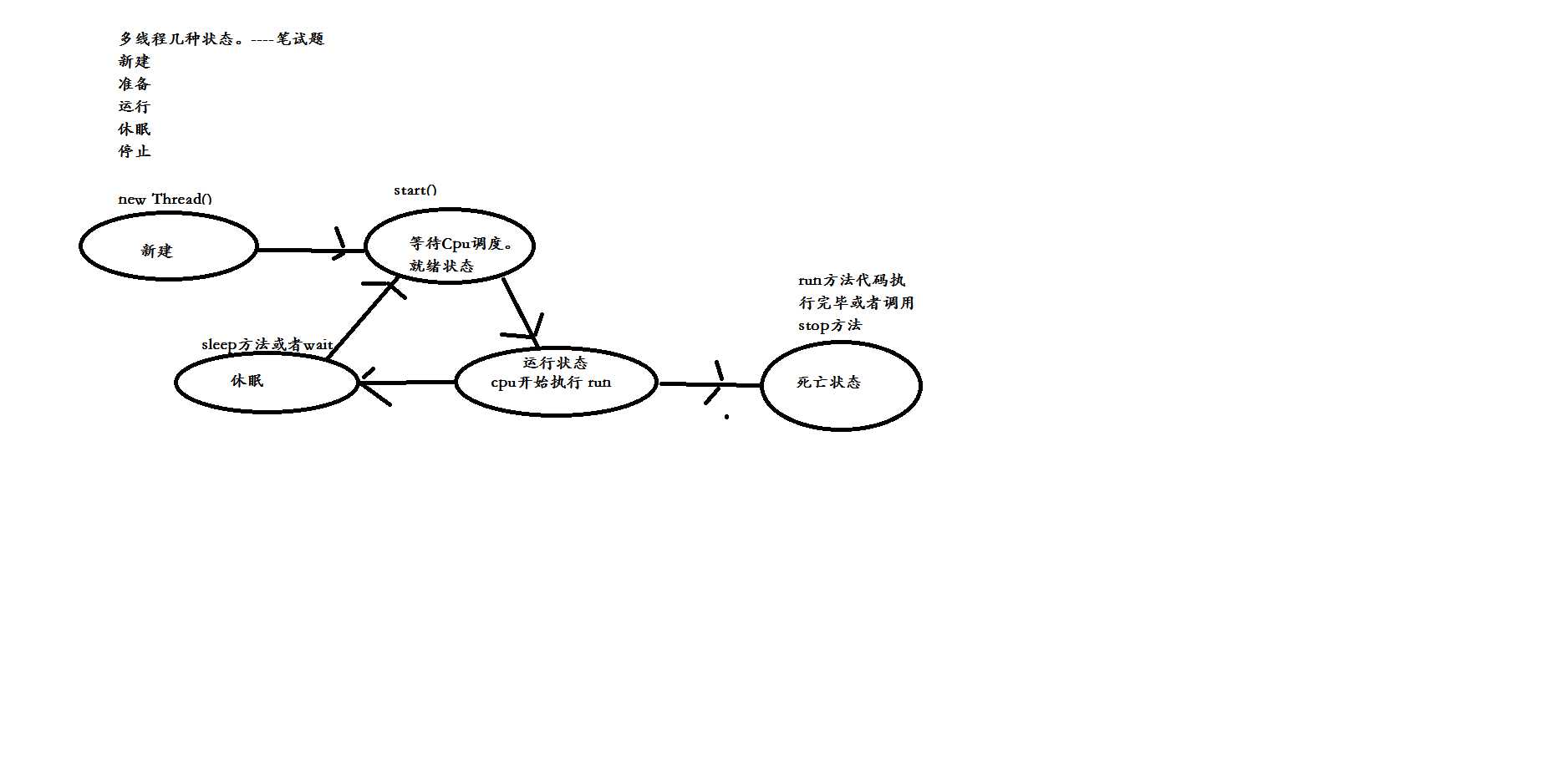标签:inf 执行 重复 print cep ++ public new t static
JAVA多线程
1.使用Runnable接口方式创建线程
2.使用匿名类方式创建线程
3.线程常用api
4.守护线程与非守护线程
5.线程几种状态
6.join方法介绍
1.使用Runnable接口方式创建线程
代码
1.1实现Runnable run方法
class CreateThreadDemo02 implements Runnable {
public void run() {
// 具体的线程需要执行的任务
System.out.println("子线程开始启动....");
for (int i = 0; i < 30; i++) {
System.out.println("run i:" + i);
创建main方法调用子线程 Runnable 接口不能直接使用start方法需要创建threat对象
public static void main(String[] args) {
CreateThreadDemo02 createThreadDemo02 = new CreateThreadDemo02();
Thread thread = new Thread(createThreadDemo02);
thread.start();
System.out.println("主线程开始启动....");
for (int i = 0; i < 5; i++) {
System.out.println("main i=" + i);
}
System.out.println("主线程执行完毕....");
思考是使用threa继承好还是使用Runnable接口好
因为我们是对象接口进行编程,而且是单继承多实现 所有使用Runnable接口的方式使用多继承比较好
2.使用匿名类方式创建线程
2.1首先我们需要在一个类中创建一个类称为类部类、
2.2创建main方法创建threa实现Runnable run 方法 执行线程
public static void main(String[] args) {
Thread thread = new Thread(new Runnable() {
@Override
public void run() {
// 线程需要执行的任务代码
System.out.println("子线程开始启动....");
for (int i = 0; i < 30; i++) {
System.out.println("run i:" + i);
}
}
});
thread.start();
System.out.println("主线程开始启动....");
for (int i = 0; i < 5; i++) {
System.out.println("main i=" + i);
}
System.out.println("主线程执行完毕....");
// 创建的线程,为和主线程并行执行。
}
3.线程常用api
3.1getId() 线程的id 唯一, 不会重复 使用方式
System.out.println("线程id:" + getId() + ":子线程 ,i:" + i );
3.2stop();// 不安全。不建议大家使用 线程死亡方法 使用方式因为stop方法不管代码执行在哪直接死亡
Thread.currentThread().stop();
3.3Thread.currentThread() 获取到当前线程的 id name 当前线程死亡、
System.out.println("主线程:" + Thread.currentThread().getId() );获取当前线程ID
System.out.println("name:" + Thread.currentThread().getName()); 获取当前线程name
Thread.currentThread().stop(); 当前线程死亡
4.守护线程与非守护线程GC线程

GC线程主要收取线程垃圾主要收取主线程
守护线程使用方式、对象名.setDaemon(true);
t1.setDaemon(true);//t1该线程为守护线程 如果主线程执行完毕则一起销毁
非守护线程和主线程互不影响
5.线程几种状态
5.1准备状态 创建线程
5.2就绪状态 调用start等待运行
5.3运行状态 开始运行
5.4休眠状态 调用sleep方法,转到就绪状态
5.5死亡状态 调用stop方法死亡

6.join方法介绍
6.1 如果线程对象调用join方法将等待其他待的线程执行完毕在执行,使用方法如下
public static void main(String[] args) {
Thread t1 = new Thread(new Runnable() {
public void run() {
for (int i = 0; i < 20; i++) {
System.out.println("T1,i:" + i);
}
}
});
t1.start();
Thread t2 = new Thread(new Runnable() {
public void run() {
try {
t1.join();
} catch (Exception e) {
// TODO: handle exception
}
for (int i = 0; i < 20; i++) {
try {
Thread.sleep(30);
} catch (Exception e) {
// TODO: handle exception
}
System.out.println("T2,i:" + i);
}
}
});
t2.start();
Thread t3 = new Thread(new Runnable() {
public void run() {
try {
t2.join();
} catch (Exception e) {
// TODO: handle exception
}
for (int i = 0; i < 20; i++) {
try {
Thread.sleep(30);
} catch (Exception e) {
// TODO: handle exception
}
System.out.println("T3,i:" + i);
}
}
});
t3.start();
标签:inf 执行 重复 print cep ++ public new t static
原文地址:https://www.cnblogs.com/liurenj/p/12178513.html